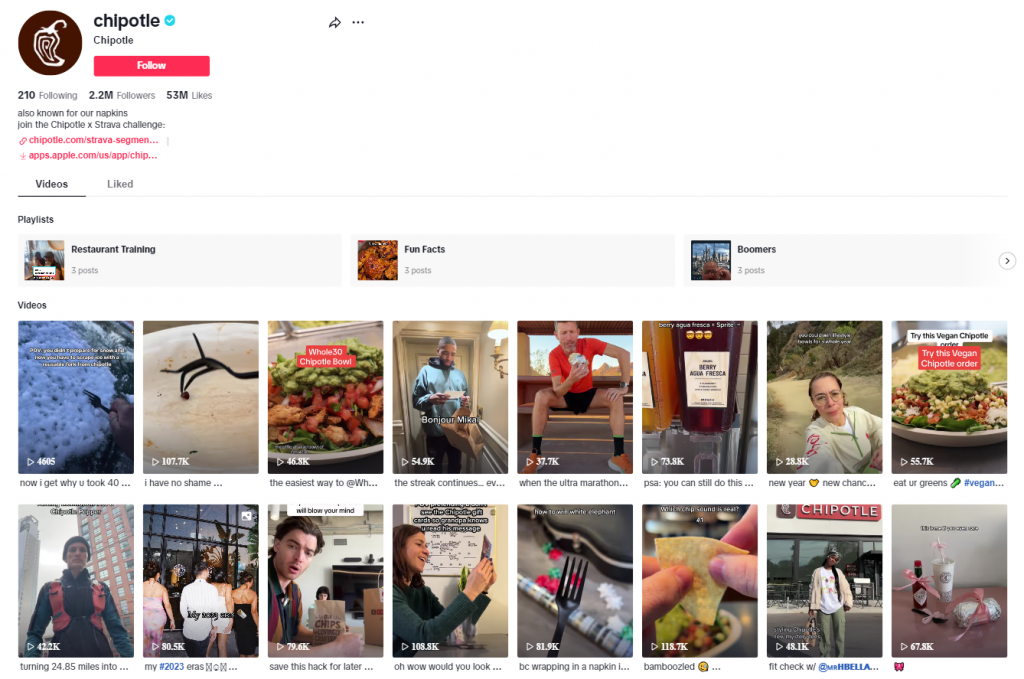With a plethora of digital marketing channels, platforms, and strategies, social media has become a must for small businesses and large companies alike.
This blog post is your gateway to not just understanding the importance of a well-structured social media strategy but also implementing one.
Here are nine steps for creating a social media strategy that will work for your brand.
How to create a social media strategy in 9 steps
#1 Define your goals
You need to be clear about your goals before moving forward with your social media campaign.
Your social media strategy won’t fix everything, but it will help you stay on track, see how you’re doing, and get the most out of your work.
Your business goals should be SMART – Specific, Measurable, Achievable, Relevant, and Timely.
This means that they should be real, quantifiable objectives that you can work towards.
So, for example, “Get more social media reach” is not a goal per se – but “Increase social media reach in my target group by 10% in Q1 2024” is.
Whichever objectives you choose, from boosting brand visibility to expanding your social media lead generation, make sure they are defined with precise figures for clear, measurable success.
How many goals should you set for yourself? A good rule of thumb is to set no more than three marketing goals to keep them measurable and achievable.
#2 Specify your target audience
Social media allows you to drill down and target exactly who you want.
Knowing your target audience will help you determine which social media platforms they use, how they engage with content, what times and frequencies work best, what kind of Facebook ads would resonate with them best, etc.
And, before you start brainstorming ideas for content and engagement strategies, you simply need to do your homework and tackle audience research.
Check the demographics of your ideal target audience – age, gender, interests, location, language, and other relevant factors.
While there are many reports, surveys, trend compilations, and industry studies that you can use, it’s always best to get feedback and insights from your existing followers and analyze your first-hand data on audience demographics.
#3 Audit your social media channels
Although it may be tempting, don’t skip this step. You need to know the strengths and weaknesses of your social accounts.
Auditing your social media channels involves:
- Reviewing past content and strategies: examine previous engagement methods and content types to understand what has been done.
- Assessing effectiveness: evaluate the success of past strategies and determine which social media channels were most effective in reaching your audience.
- Identifying popular themes: pinpoint which types of content and topics resonated most with your audience.
- Discover patterns for future strategies: use insights from your evaluations to identify successful patterns to guide your upcoming social media efforts.
The more honest it is, the better – don’t ignore weak points, and try not to build your social media strategy on assumptions.
You should also assign actions:
- leave channels that aren’t helping you reach your goals,
- fix bugs, outdated info, old graphics,
- grow those platforms where you have the most success,
- delete content that is irrelevant or just plain wrong,
- update ideal customer profiles and any other assets that you think might not be accurate.

Gathering all these insights manually might take you a lot of time – especially if you run multiple profiles.
Leverage Kontentino’s Analytics in your social media audit. In a few clicks, you can get a complete overview of your performance across all channels. This will make it easier to decide where and how to improve.
#4 Analyze your competitors
Can you develop a social media content calendar without looking at what your competitors are doing?
Absolutely.
However, wouldn’t it be great to gain insights into their strategies to draw inspiration and steer clear of their pitfalls?
Conducting a competitive analysis in the social media sphere is about finding out who’s doing what:
- What content are they creating?
- What topics are they covering?
- What social media channels are they focusing on?
- What content strategy are they using to engage their social media followers?
- How often are they posting?
You don’t need to analyze 20 competitors in bulk – usually, three is enough to get an idea of what’s happening in your industry. You can do that with Kontentino. Pick a few competitors, and run the comparison with Competitor Analysis. Start from your direct competitors and then move on to other companies in your sector, if needed.

#5 Set your KPIs
Goals outline the broad objectives or the “what” you aim to achieve.
KPIs (key performance indicators) are specific metrics that track your progress towards these.
Keep them real, quantifiable, and as specific as possible.
A few good KPIs that you could match with an effective social media strategy are:
- engagement rate of your video content,
- reach of your posts among your target audience,
- number of leads generated from social media campaigns,
- cost per lead per social media marketing channel,
- number of new subscribers on your YouTube channel.
It’s super easy to lose track of your social media KPIs in your own strategy over time, so you need to keep them in check.
With Kontentino’s Analytics section, you can measure social media marketing performance and monitor all of your KPIs to check that you’re on the right path to achieving your goals.
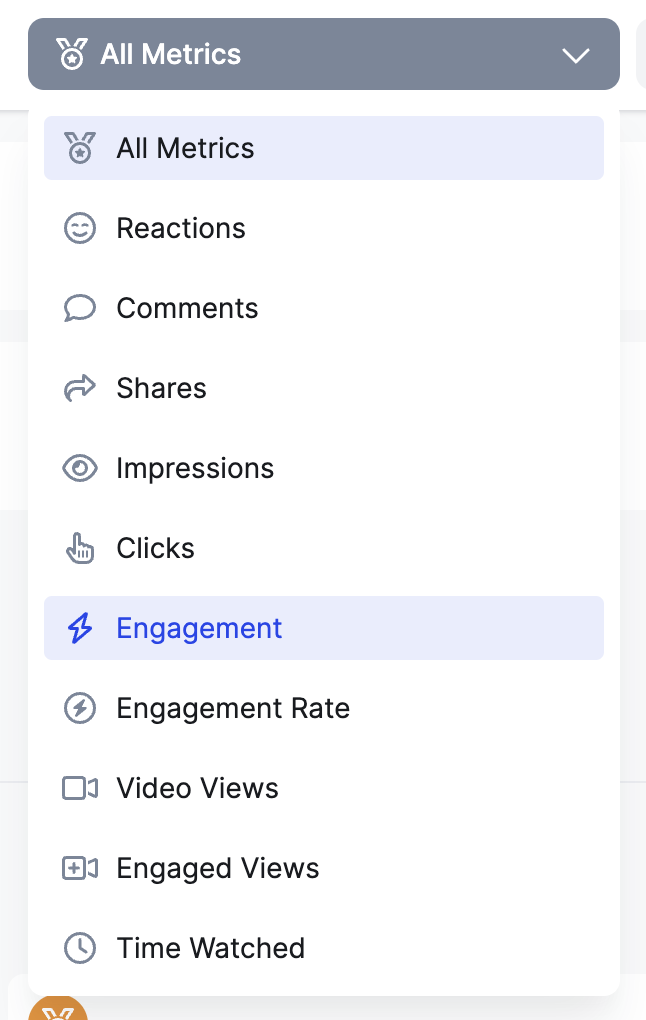
#6 Choose social media platforms
By now you have a clear idea of what worked and what didn’t.
You have your business goals, you have your KPIs. Now it’s time to figure out which social media channels are the right ones for you.
Focus on those channels that can make an actual difference to your social media marketing strategy – these would be the channels your target group uses the most.
It’s also important to tailor your content to each social media platform for maximum effectiveness.
The “starting point” when it comes to social channels for your social media strategy is picking one or two from the platforms below:
- the largest audience segment consisted of males aged 25-34, accounting for 17.6%. Users over the age of 35 make up 43% of Facebook’s audience
- 2.085 million active users globally as of Q3 2023
Twitter (X)
- estimated to have over 335 million users worldwide in 2024
- leading country with most users: the United States– over 95 million users
- projected to reach 1.44 billion users by 2025
- most popular among people aged 18-24 (30.8%) and 25-34 (30.3%)
- over 1 billion members in over 200 countries and territories
- male users worldwide: 56.3%
YouTube
- estimated to reach 1.1 billion users, a new peak, in 2028
- top 3 leading countries based on audience size: India, the United States, Brazil
- monthly active users worldwide: 482 million (as of Q3 2023)
- top 3 leading countries based on audience size: the United States, Brazil, Mexico
TikTok
- top 3 countries with the biggest audiences: the United States, Indonesia, Brazil
- the least used social media platform by marketers – 26%
Snapchat
- most popular among millennials and Generation Z
- 406 million daily active users worldwide as of Q3 2023
Google Business Profile
- 6/10 consumers use the Google Business Profile to find company contact information
You can complement your choice with some “niche” social media channels like Reddit, Quora, BeReal, Twitch, or even Mastodon. However, ensure that it makes sense for your audience.Even though you will probably use a combination of channels that offer similar post formats (for example, Facebook + Instagram, Instagram + TikTok, LinkedIn + Facebook, or Pinterest + YouTube) make sure you adjust your content to each of them.
#7 Create a social media content calendar
A content calendar is an integral part of your social media marketing plan – it’s the navigating practical base of your social media strategy.
It gives you an overview of what content should be published, when, and where.
This way, you won’t forget to post anything or mix it up, as can happen with a more improvised approach.
Your social media content calendar should include information about:
- Social media channel – which social network you’re going to post on.
- Posting schedule – when and what content should be posted.
- Content type – what kind of format (e.g. GIF, video, photo, text).
- Target audience – who should you reach with this post?
- Performance tracking – have you achieved your desired goal?
- Topic– you might want to separate educational content from engaging video content or pure social media ads (in Kontentino, you can use labels to do so).
- Social media budget – associated with each post (you can add this info in Kontentino).
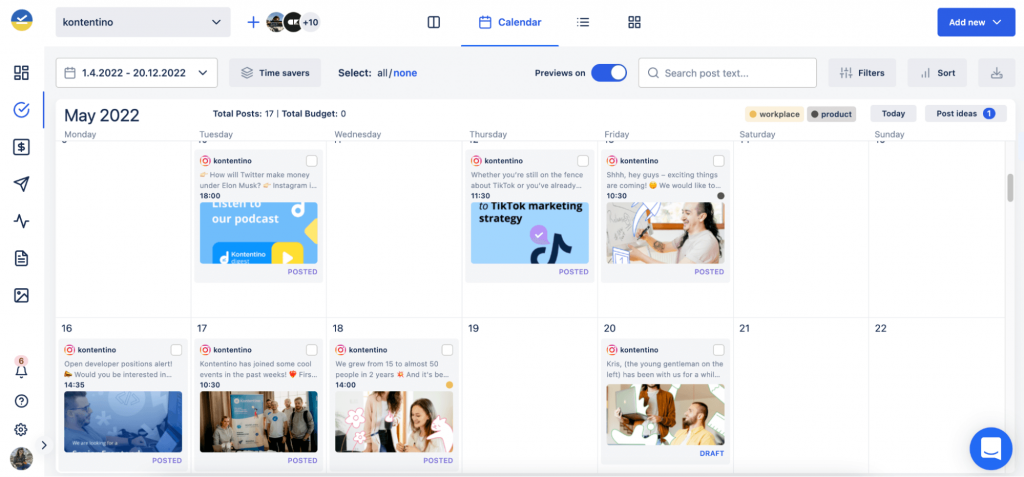
#8 Set up a workflow in your team
To create and execute a successful social media strategy, you need people. We identified five crucial areas you should consider when working with a team and called it REACT.
- R for Resources: Gathering all relevant resources, assets, and passwords in one place, accessible for everyone in the workflow.
- E for Environment: Understanding goals, metrics, and decision-making.
- A for Accountability: Dividing roles, responsibilities, approval levels, and tasks within your social media team.
- C for Communication: Creating SLA for communication, meetings, and stand-ups.
- T for Timelines: Setting up deadlines, project milestones, and deliverables.
For many of the points above, you can use features accessible in Kontentino. From planning out content ahead, to approving posts before they’re published – you get workflow boosters directly in your panel.
#9 Analyze performance and optimize your social media strategy
Analyzing and optimizing your social media marketing strategy is crucial to ensure its success.
Regularly reviewing your content’s performance helps you understand what resonates with your audience and what doesn’t, allowing you to make informed decisions and continuously improve your approach for better results.
You can track and analyze almost any data related to social media performance, however, you should focus on those that are the most burning for your social media strategy.
Some data you can scrape manually, but it’s social media analytics solutions that come in handy when you want to run a deeper analysis.
Analytics is just the first step, though – you need to use that data as feedback and optimize your social media strategy accordingly.
You won’t fix everything overnight, as this requires time and experimentation. Plan ahead, review the results, learn from them, test various social media formats, and adjust your social media strategies for better performance.
Social media strategy – Free Template
Developing a social media strategy might seem like a lot to process.
If you feel overwhelmed at this point – don’t worry.
We created an editable social media strategy template that you can download for free:
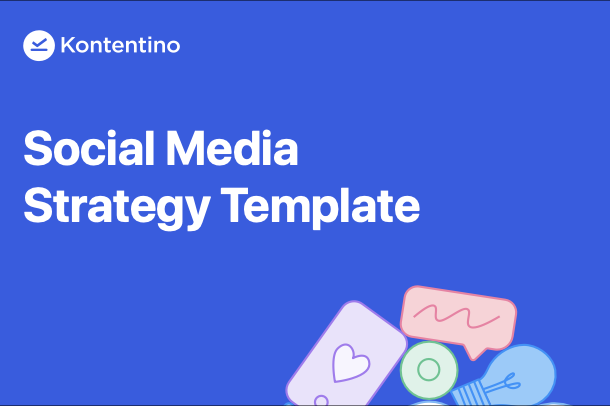
Social Media Strategies Examples
#1 Nike
There is much more to Nike than just clothing and shoes.
It is an iconic example of how to cross-promote activities within and around the industry.
They are social media savvy and creative! They also share their initiatives such as influencer collaborations and #nyvsny, just to name a few.
They have a few social media accounts on Twitter alone dedicated to particular sports, countries, or even cities.
This allows them to localize and personalize their content. If you run a global brand or a brand that is present in a few markets, that might be a strategy worth pursuing.
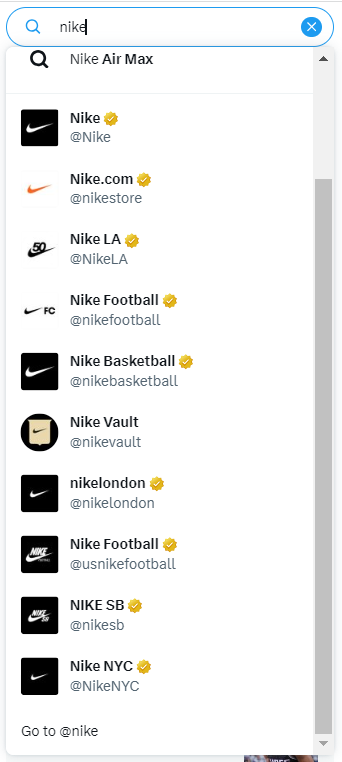
Lesson for you: try to make social media content out of everything that is happening in the company – you might be surprised at how much content you get “out of nowhere”.
#2 Chipotle
If we were to choose a few brands that rock on TikTok, Chipotle would be near the top of the list.
It’s one of the first companies to enter and use the full potential of TikTok.
With witty content varying from hilarious material on how to wrap gifts using a Chipotle bag, to reactions and trend-following videos – everyone will find something for themselves.
And so did Chipotle, using the platform to generate stable viewing figures in the thousands (or even millions) for each posted video.
Lesson for you: entering another platform won’t hurt, and if you can be one of the first brands to test it – even better!
#3 SpecSavers
On social media, SpecSavers massively rely on real-time marketing.
They do so multidimensionally in the form of social media posts related to the latest events, or even directly under posts from other accounts in the form of comments.
This way, SpecSavers have established themselves on social media as witty and relevant to the point that other brands keep imitating them (with varied impact).
Lesson for you: real-time marketing is not a fad. While you don’t need to be the next SpecSavers, spare some time for social media listening. Keep an eye on mentions of your brand on social media and react wherever appropriate.
Lesson for you: real-time marketing is not a fad. While you don’t need to be the next SpecSavers, spare some time for social media listening. Keep an eye on mentions of your brand on social media and react wherever appropriate.
#4 Netflix
Oh, Netflix, where do we start?
With so much video content available on the platform, it’s only natural for them to leverage that on social media.
They publish trailers, cliffhanger scenes, best bits, and lines from their plethora of series and movies.
This kind of content resonates both with those who have already watched the series (and can comment or tag others, knowing the context) and people who plan to binge-watch it later on (so are looking for inspiration).
Lesson for you: do the same – if you have longer videos, try to trim them down for Reels. Do you know that from a single one-minute video, you could create even 15 various video formats? This should also give you food for thought when it comes to recording or creating any video content – keep in mind to do so in a form that can be redistributed or edited further.
Common mistakes in building a social media strategy (and how to dodge them)
Crafting a killer social strategy isn’t rocket science – but it’s not a walk in the park either. Here are the five common pitfalls that can derail your social media marketing efforts and stunt your social media presence. Fix these, and you’ll be well on your way to nailing those social media marketing goals!
1. Chasing the wrong social media metrics
Obsessing over new followers might seem like a win, but it’s not the key to success. Vanity metrics are tempting but don’t move the needle on real business impact. Without focusing on key metrics like engagement, audience growth rate, and conversions, you’re just chasing numbers.
How to avoid it?
Align your social media marketing goals with real-world business objectives. Track engagement, clicks, and conversions using social media management software to ensure your strategy is driving meaningful results. It’s about quality over quantity, always.
2. Ignoring platform-specific strategies
Posting the exact same content on multiple platforms? That’s a surefire way to tank your engagement. Each of the social media marketing platforms caters to different audiences with different preferences. Ignoring these nuances will limit your social presence.
How to avoid:
Optimize content for different social media platforms. Your Facebook audience wants something different from your LinkedIn crowd. Use social media management software to manage your content and ease your efforts across social channels without making everything feel cookie-cutter.
3. Neglecting the brand voice
Inconsistent messaging across your social media marketing campaigns is another trap. Failing to establish a unified brand voice that matches your company culture leads to confusion. And, as we know it, confusion does not increase brand awareness.
How to avoid:
Define a clear brand identity. Ensure your social media team is in sync with your brand strategy by using content creation tools that keep messaging consistent across every post, comment, and DM. Remember, social media managers are the gatekeepers of your brand’s voice in the social space.
4. Skipping social listening
Many brands shout but don’t listen. When you don’t pay attention to what your relevant audience is saying, you miss out on valuable insights that can help refine your social marketing strategy. Don’t just speak – hear.
How to avoid:
Engage in active social listening to better understand what your relevant audience cares about. Monitor conversations on your social media pages and business accounts to gather insights. These are the gems that drive deeper engagement and boost brand awareness.
5. Overlooking the importance of goals and measurement
Too many brands fail to set specific social media goals or simply forget to measure their efforts. If you’re not tracking your social media metrics, how will you know if your campaign worked? You wouldn’t launch a business without KPIs, so why would you do it with social?
How to avoid:
Set crystal-clear social media marketing goals aligned with your overall business objectives. Use social media management software to track engagement, conversions, and even direct messaging effectiveness. Regularly review your data to measure success and adjust your approach to generate leads or drive traffic.
It’s easy to fall into these traps, but they’re also easy to fix with the right focus.
By creating platform-specific content, honing your brand identity, listening to your audience, and consistently tracking key metrics, you’ll avoid the common pitfalls of ineffective social marketing strategy. Stop chasing the wrong numbers, start refining your tactics, and watch as you save time, increase brand awareness, and generate leads.
Types of social media strategy per vertical
Social media strategy for B2C brands: boosting follower growth and customer engagement
For B2C brands, effective social media marketing relies heavily on driving follower growth and engagement. With social ads across various social media networks, businesses can reach broader audiences and increase brand awareness. Brands should encourage user generated content to build authenticity and trust among customers.
Personalizing content to align with customers’ personal values can further boost engagement, making social channels a powerful tool for growing customer relationships and loyalty.
Social media strategy for B2B companies: building partnerships and driving social selling
For B2B companies, a social selling strategy is what’s extremely valuable. Social platforms like LinkedIn allow businesses to engage with other businesses and create valuable partnerships. A well-coordinated social team can use relevant keywords to reach decision-makers.

For example, Timeular, a PTO tracker, lists all calendar types in their LinkedIn posts to gain some interest from the users of these calendars.
B2B companies should focus on educational content and case studies, helping to build authority and increase brand awareness. Sharing industry insights, B2B brands can grow their influence and drive leads through effective relationship building.
Ecommerce businesses: driving sales through social ads and user generated content
For ecommerce businesses, retargeting ads play a central role in increasing conversions. With platforms like Instagram and Facebook, brands can target specific audiences and drive traffic to product pages. Encouraging user generated content and influencer partnerships builds social proof, which is critical for driving purchasing decisions. For example, for Daniel Wellington, it’s one of the core strategies for the last couple of years.

With effective social media activities like giveaways and interactive posts, ecommerce brands can increase brand awareness and promote higher sales volume through constant engagement.
Local businesses: increasing brand awareness through community building on social networks
For local businesses, building a community through social media networks is crucial. Engaging with local customers through posts that reflect their personal values helps businesses build loyalty and increase brand awareness. Local businesses should focus on maintaining an active presence, highlighting their community involvement and offering localized promotions. That’s exactly what New York Bagel Bar is doing:

Through stories, events, and updates relevant to their audience, local businesses can thrive by creating a strong, community-driven social media presence.
SaaS companies: using social media activities to drive product adoption and lead generation
For SaaS companies, effective social media marketing should emphasize educating users and driving follower growth through content that highlights the benefits of their software. The social team should focus on delivering tutorials, product updates, and thought leadership – like Canva does:

Using ads targeted at potential clients can drive lead generation, while partnerships in the tech space can further amplify reach. Engagement with users can increase adoption and create a strong user base.
Nonprofits: increasing awareness and driving donations through storytelling
Nonprofits can leverage social media networks to tell compelling stories that resonate with supporters and drive donations. Showcasing campaigns, volunteer work, and success stories can encourage user generated content from supporters. See how MACMA does it:

Nonprofits should prioritize social media activities like donation drives and virtual events to build awareness and connect with their audience. With the right message and visuals, nonprofits can increase brand awareness and grow their supporter base through authentic storytelling.
Hospitality and travel: using social media to enhance customer experiences and drive traffic
In the hospitality and travel industry, an effective social media marketing strategy revolves around showcasing destinations and services in visually compelling ways. By leveraging smart hotel solutions, hotels can provide automated and personalized experiences that guests will want to share on social media. Hotels, resorts, and travel agencies should engage customers with personalized offers and experiences, while encouraging user generated content that highlights customer satisfaction.
Hotel du Vin Brighton shares info on the accommodation along with contact info on their Facebook:

Social ads targeted at travelers can help drive traffic to booking platforms. A consistent presence on key social media networks ensures ongoing engagement and follower growth.
Retail and fashion: leveraging social media to boost brand identity and increase conversions
Retail and fashion brands benefit from showcasing their products through vibrant, well-targeted social ads. Aligning content with their audience’s personal values, brands can build an incredibly strong brand identity. Encouraging user generated content and customer reviews builds social proof, which directly drives conversions – like here:

Active participation in trends and collaborations with influencers help retail brands stay relevant in the crowded social space while ensuring steady follower growth and loyalty.
Your social media strategy is set for social media success
Whether you own small businesses or manage a large team, the key to success is having a well-thought-out social media strategy that you can follow through and optimize when needed.
Your social media marketing strategy is your compass, so make sure you always keep it close.
In the ever-changing digital landscape, even the best social media strategies need updates every now and then!
FAQ
What are the social media strategies?
A social media marketing strategy involves creating a plan to engage your target audience through relevant content, consistent posting, and using social media platforms to achieve specific business goals like brand awareness, lead generation, or customer loyalty.
What are the 7 C’s of social media strategy?
The 7 C’s are content, community, conversation, consistency, collaboration, credibility, and customer service. Together, they form the foundation for an effective social media marketing strategy that engages your target audience and drives results across social media platforms.
What is the 50 30 20 rule for social media?
The 50-30-20 rule recommends posting 50% engaging content, 30% curated content, and 20% promotional content. This balance keeps your target audience interested while promoting your brand across social media platforms effectively without overwhelming followers with sales messages.
What are the 7 steps to creating a social media strategy?
Define your goals, identify your target audience, choose the right social media platforms, create a content plan, post consistently, engage with your audience, and analyze results. These steps form the backbone of any successful social media marketing strategy.
What is a good social media strategy?
A good social media marketing strategy aligns with your business goals, resonates with your target audience, utilizes appropriate social media platforms, and is adaptable. It emphasizes consistency, engagement, and uses analytics to refine and improve over time.
Which social media marketing platforms are the best?
The best social media platforms depend on your target audience and industry. Instagram and Facebook are strong for B2C, LinkedIn for B2B, and Twitter for real-time engagement. Tailoring to your audience’s preferences ensures better success in your social media marketing.


